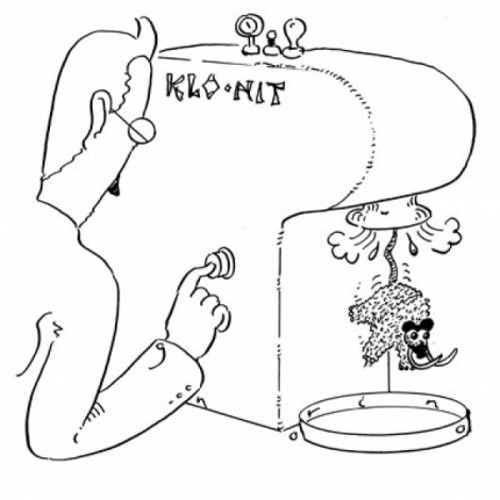A friend insists a team of scientists is dedicated to cloning a woolly mammoth. I’d love to believe this is true, and if it is, what are the plans for these critters? Zoos? Releasing them into the wild? Farming? Or a pet for the billionaire that already has everything else? Also, why start with woolly mammoths and not something smaller and hopefully easier, like passenger pigeons? —Michael Roberts, Berkeley
I’m not making you chief strategy officer of my genetic engineering startup, Michael. “Clones mammoth” = front-page headlines, big bucks. “Clones pigeon” = Tonight Show joke. More to the point, for a would-be cloner, deciding whether you’re going to sell your output to zoos or Richard Branson is a classic case of counting your pterodactyls before they’re hatched.
Any scientific venture that involves creating life without benefit of the usual reproductive processes generally inspires two reactions. First you’ve got your Popular Mechanics types saying: “Cool, can I have one?” Then you’ve got the technophobe contingent, which oddly includes both religious fundamentalists and Hollywood scriptwriters, who fret that scientists are playing God. Meanwhile, back in the lab, the scientists themselves are thinking: “First, let’s establish whether we can actually do this; then we can wring our hands over whether we should.”
To answer your question, I know of at least two scientific groups who’ve sporadically attempted to find some suitable mammoth samples from which a new specimen could eventually be cloned:
• In 1996, a Japanese team led by reproductive physiologist Kazufumi Goto and geneticist Akira Iritani began prowling around the Siberian tundra for either frozen mammoth sperm or viable mammoth DNA from other cell nuclei. If they found the former, they planned to inject it into the egg of a modern elephant and produce a mammoth-elephant hybrid. If they found viable DNA, they’d take a stab at a 100 percent pure clone. Initial efforts went nowhere, but in early 2011, Iritani told reporters he was still at it and anticipated success—via a new technique that recently produced a cloned mouse from frozen tissue—within just a few years.
• Meanwhile, beginning in 1998, French polar adventurer Bernard Buigues led an international team of paleontologists on several expeditions to Siberia also looking for mammoths, which they planned to send to a lab for possible cloning. Buigues and company found a number of carcasses, most famously one allegedly encased in a 23-ton cube of frozen dirt with only its tusks showing, which was seen being hoisted from the permafrost in the Discovery Channel documentary Raising the Mammoth. However, Buigues later conceded the tusks had been stuck in place to make the otherwise prosaic dirt clod more telegenic—whether it actually contained a mammoth has never been determined. To be fair, Buigues was part of a team that hauled out another mammoth carcass in 2010, so maybe something will come of all this yet.
All I can say is, good luck. Cloning extinct creatures presents two nontrivial challenges. The first is the difficulty of cloning, period. Everybody remembers Dolly the cloned sheep, introduced to the world in 1996. What was little noted at the time was that Dolly was the only one of 277 candidate embryos to actually make it. No doubt the success rate will improve, but the day when test-tube cloning becomes routine is a long way off.
The second problem is perhaps even knottier, namely finding ancient genetic material that’s still in clonable condition. While I hate to disappoint T. rex fans, it’s unlikely we’ll ever clone dinosaurs à la Jurassic Park. It is possible to extract DNA from old bones—researchers have successfully retrieved chunks of Neanderthal DNA that way. But dinosaur bones are so old they’ve been lithified, meaning the original organic material has been replaced by minerals, and nobody has figured out how to extract DNA from stone.
In theory, you can still clone mammoths and other animals whose departure was relatively recent and whose bodies have merely been frozen. As the permafrost thaws due to global warming, more specimens are turning up, and while the chances of finding a complete set of intact mammoth chromosomes are slim, you can find plenty of DNA scraps. Decode enough of these and do some monster data crunching, and eventually you can piece together the complete gene sequence. As it is, more than half the genome for a 10,000-year-old mammoth was published in 2008.
That doesn’t mean you can make a decent clone. To illustrate: A Pyrenean ibex, a type of mountain goat, was cloned in 2009. The species had been declared extinct less than 10 years earlier—the DNA used for the clone was extracted from the last known specimen. It took 439 embryos to produce one duplicate from that carefully preserved genetic material. The neo-ibex’s fate? It died minutes after birth due to lung defects, a recurring problem with clones. Sure, we’ve got the download—that is, the genome. Unfortunately, we’re dealing with analog, not digital, technology, and the playback still sucks.
Send questions to Cecil via straightdope.com or write him c/o Chicago Reader, 11 E. Illinois, Chicago 60611. Subscribe to the Straight Dope podcast at the iTunes Store.
More by Cecil Adams
-
This Is the End, My Friend
This week's Straight Dope marks the last appearance of the column as the Teeming Millions have known it for the past 45 years.
- Jul 11, 2018
-
Do Brain Supplements Do Anything?
Brain Drain
- Jul 4, 2018
-
Is flying really worse for the environment than driving?
Planes and Trains
- Jun 27, 2018
- More »




